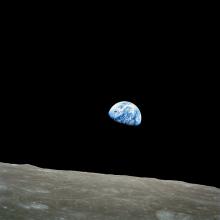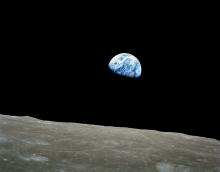Listen to today's episode of StarDate on the web the same day it airs in high-quality streaming audio without any extra ads or announcements. Choose a $8 one-month pass, or listen every day for a year for just $30.
You are here
Dark Eclipses
During most lunar eclipses, the Moon turns orange or red as it passes through Earth’s long shadow. Occasionally, though, it can turn black. Volcanic ash high in the sky can block the sunlight that normally shines through the atmosphere. At times, that can make it look like the Moon has vanished.
Scientists recently looked at records of ancient eclipses to identify some of those vanishing acts. The records helped the scientists pinpoint major eruptions in the 12th and 13th centuries. They may also help scientists better understand the start of the Little Ice Age — a 60-year period that was unusually cold.
The scientists looked at records from Europe, the Middle East, and East Asia. They found a half-dozen eclipses that were especially dark. They compared the dates of the eclipses to layers of ash found in arctic ice cores, and to similar records in tree rings. That helped them lock down the year and even the month of several major eruptions — including one of the most powerful of the past thousand years.
The ash from these eruptions cooled Earth’s surface. That could have contributed to the start of the Little Ice Age, in 1280. Scientists will continue to study the eruptions to learn more about the connection — with the help of lunar eclipses.
An eclipse is coming up on Saturday. It won’t be dark, though. In fact, the Moon will barely look any different from normal. We’ll have more about that tomorrow.
Script by Damond Benningfield





